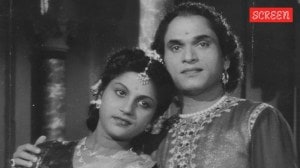Domestic affairs
The present post-election scenario brings two things to mind. One, the kirya ceremony of someone who has become a dear-departed soul. As the...

The present post-election scenario brings two things to mind. One, the kirya ceremony of someone who has become a dear-departed soul. As the ceremony ends and the purohit winds up his old song-cum-lecture and ties the turban upon the head of the heir apparent of the departed one, the principal mourners stand in a row with folded hands, looking sad and broken — or trying very hard to appear as if that is the case. They thank those who have stood by them in the hour of their bereavement. The passing caravan reciprocates, patting the heir apparent and encouraging him to face the future bravely and telling him philosophically that what has befallen him has befallen countless others before him.
The other thing takes me back to what used to happen more than half a century ago in my hometown of yore, Peshawar. It was the age of the joint family. It was the age of large houses. Four or five brides, new and ancient, used to live together, along with their husbands and countless children, under the benevolent umbrella of their mother-in-law.
Where there are utensils, there is bound to be some tinkling. Quarrels were common, mostly because of children. Some child would take away some other child’s tennis or cricket ball. Or someone would smash someone else’s head against a wall. There would be battles royal. Mothers would join issue. Since every house had four or five storeys, and on every storey there were two or three rooms, every mother had an abode of her own. And into that abode, she would retire with her kids.
The quarrelling women wouldn’t talk to one another although tandoors were common and they all had to make tandoori rotis jointly. Then would come Tuesday, the day when every woman observed Hanuman’s fast. To the best of my knowledge, Hanuman was a bal brahmachari. Why women with battalions of kids would worship him, I can’t fathom. But on that day, a remarkable thing would happen. The elder bride would go to the younger one and tell her something to the effect, “Let’s not be silly, we should not quarrel over kids. Let’s end it here.” The ladies would then embrace each other and exchange Hanuman’s prasad (ladoos). The benevolent mother-in-law would them appear on the scene, pat them on their heads and wish them, “Sadda suhagwanti raven, satputri hoven (may your husband live eternally and may you have seven sons)!”
In the election drama that has just ended, I cannot count how many kirya ceremonies have been performed. I would rather not bother about departed souls and those mourning their loss. I would prefer to think of Hanuman’s fast and the patch-ups that followed.
After all, the tandoor remains the same.





- 01
- 02
- 03
- 04
- 05


























